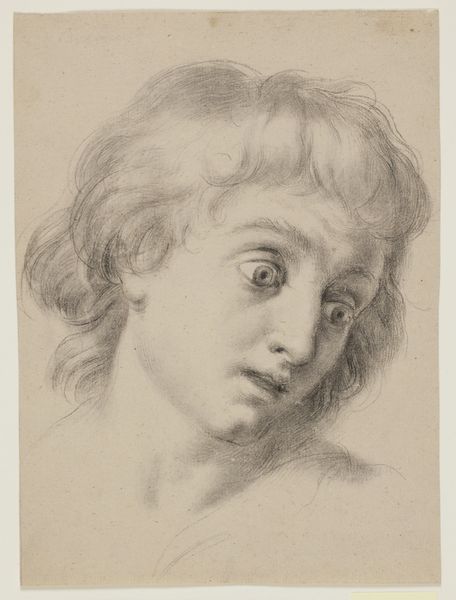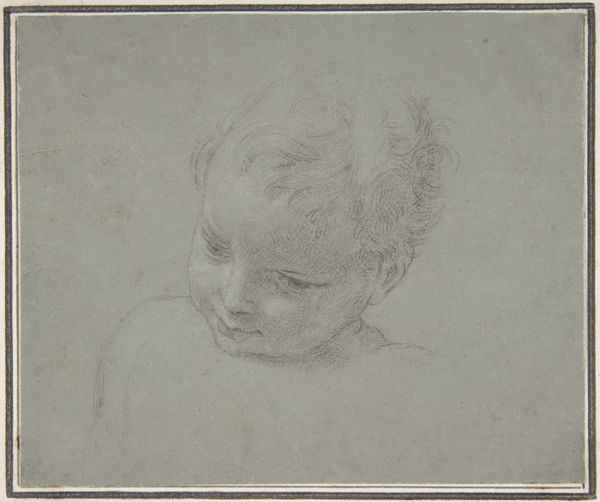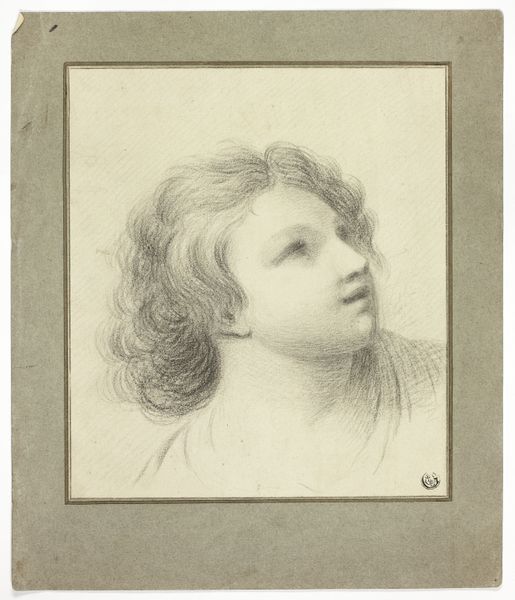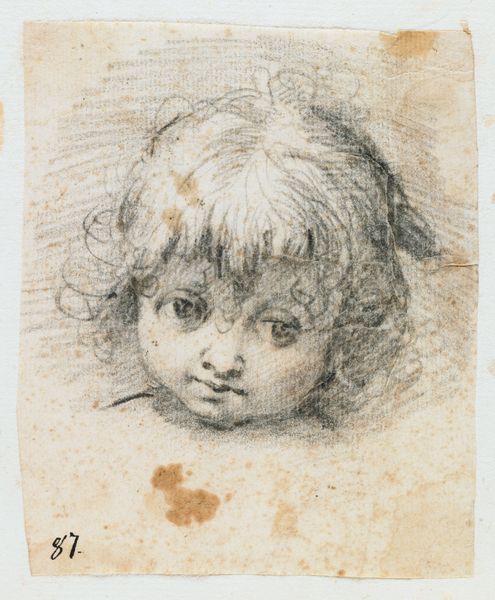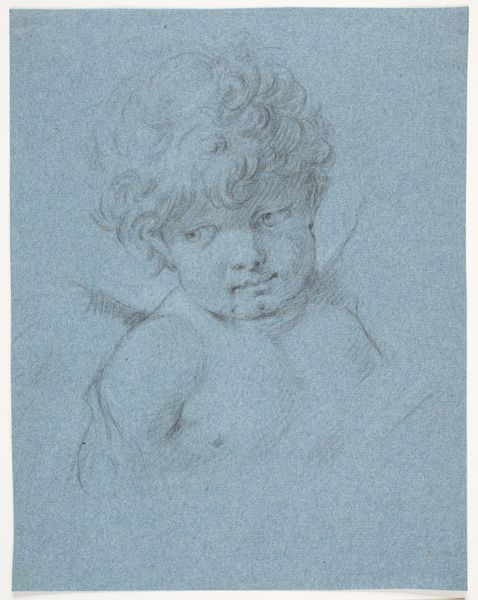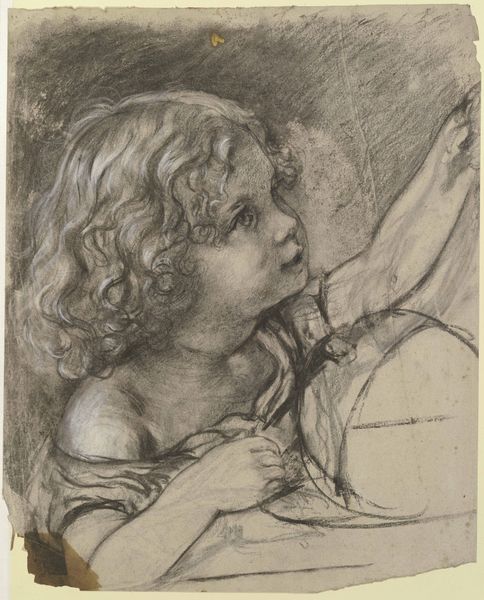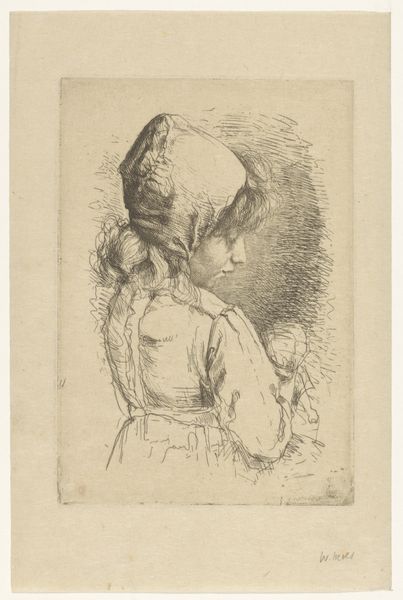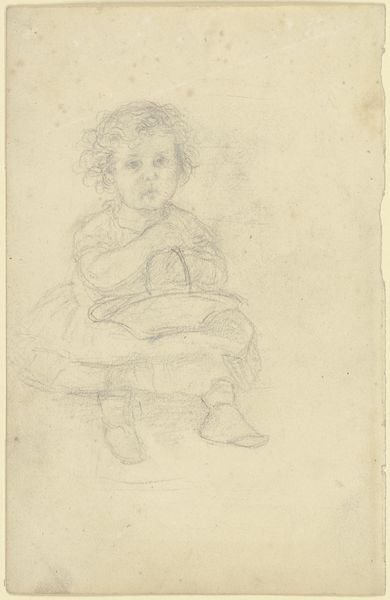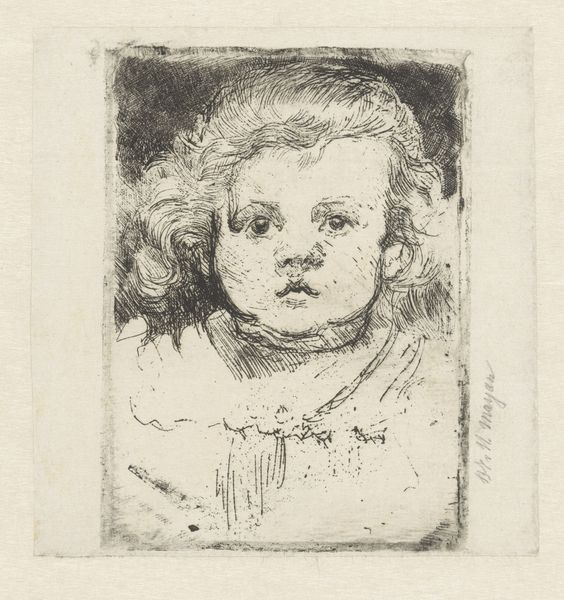
drawing, paper, pencil
#
portrait
#
drawing
#
figuration
#
paper
#
pencil
#
portrait drawing
#
genre-painting
Dimensions: 216 × 170 mm
Copyright: Public Domain
Editor: Here we have a pencil drawing on paper titled "Child Holding Hands above Head," by Samuel De Wilde. It seems quite tender. What do you see in this piece, considering its time and the possible subject? Curator: It's a fascinating image, isn't it? We can examine this from a socio-political angle, wondering about the position of children, particularly within the context of labor, or their commodification in portraiture of this time. Who was this child? Was this simply a depiction of innocence or perhaps a subtle reflection of the socio-economic realities of the era? Editor: So you're saying that even a seemingly simple sketch might carry some undercurrents related to larger social themes? Curator: Precisely. And the raised hands, consider what that signifies. Is it freedom, surrender, prayer? It depends on how the child understands that role in a larger world around him, and if it's a direct, complicit representation, or simply how an artist views a child subject in an innocent, private space. Does it reveal the sitter's world outside this sketch? Editor: It hadn't occurred to me that it could mean those things. It does make me wonder what sort of conditions this child lived in, who their parents were. The drawing style is soft and seemingly non-judgmental, making it a sympathetic portrait. Curator: Exactly, and who benefitted most from it? De Wilde might have seen their work as observational and technical studies, but by situating that work today we need to confront all those aspects of power at play when depicting an individual who had so little autonomy in a society structured around class, labor and the male gaze. We need to engage with these critical issues as we engage with art history. Editor: That definitely makes me look at it with a different lens. It shows art’s profound relation with all elements of society, not only aesthetically, but intersectionally. Curator: Absolutely. By combining the visual with historical context, we can begin to unpack art's relationship with a society structured on inequity, oppression, and class, that will hopefully dismantle it through our critical inquiry.
Comments
No comments
Be the first to comment and join the conversation on the ultimate creative platform.
